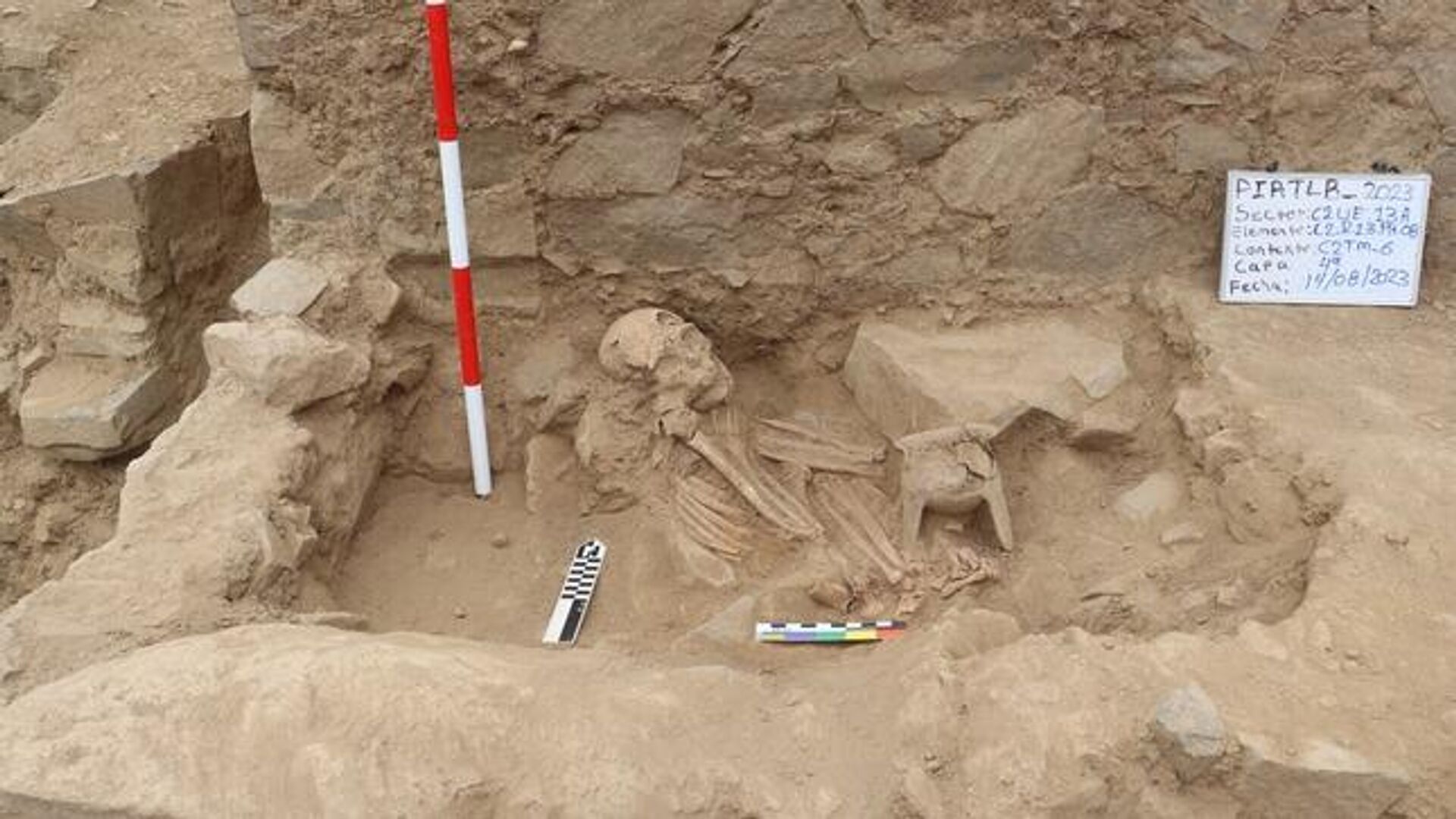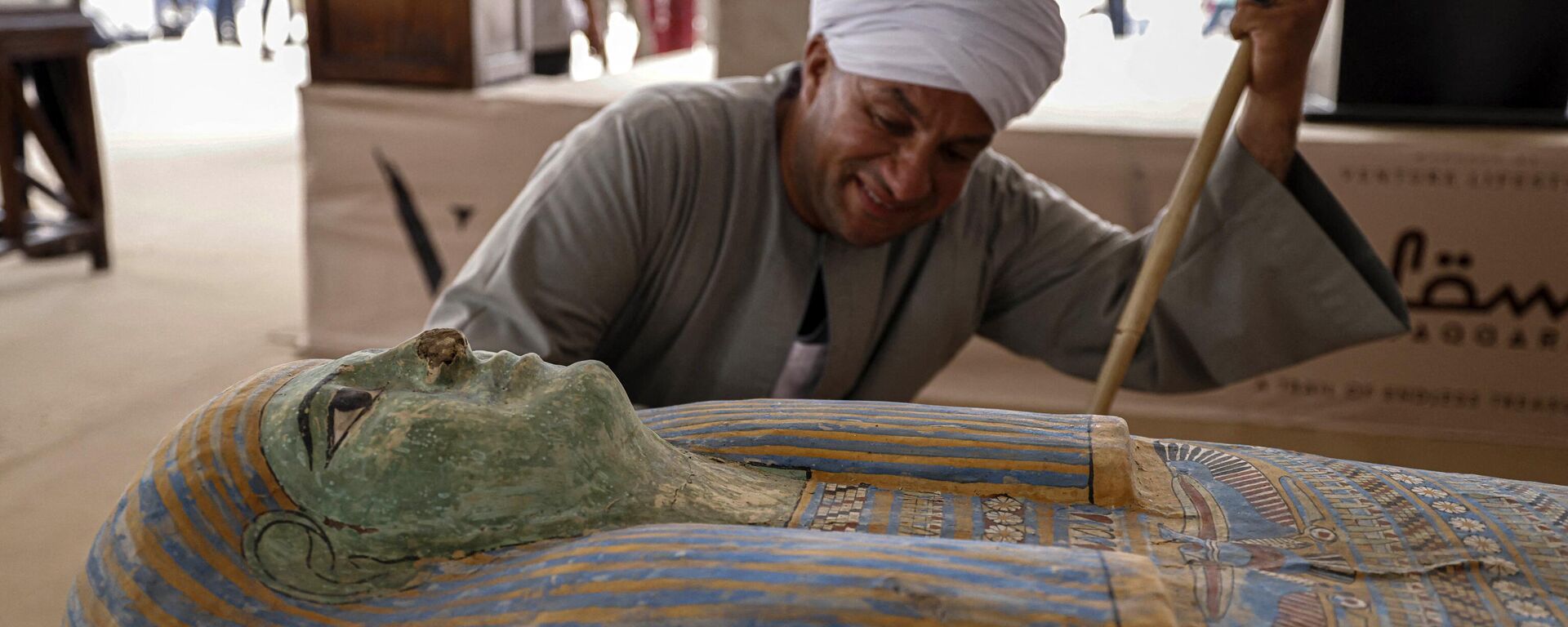https://en.sputniknews.africa/20230903/ten-century-old-ancestor-worship-site-discovered-in-peru-1061836343.html
Ten-Century-Old Ancestor Worship Site Discovered in Peru
Ten-Century-Old Ancestor Worship Site Discovered in Peru
Sputnik Africa
Archeologists explained that the findings are of a great value since there is little evidence of the Wari culture, a pre-Inca Indian culture that existed on... 03.09.2023, Sputnik Africa
2023-09-03T18:33+0200
2023-09-03T18:33+0200
2023-09-03T18:38+0200
peru
latin america
japan
international
archeology
science
culture
research
https://cdn1.img.sputniknews.africa/img/07e7/09/03/1061837469_0:0:646:363_1920x0_80_0_0_854f886a1e262fc1b47e71603a5672d2.jpg
Peruvian and Japanese archeologists have uncovered a pre-Hispanic site dedicated to an ancestor cult, with burial chambers, human remains and ceramic offerings in the Cajamarca region of northern Peru, the Ministry of Culture said.According to archaeologists, the unearthed site includes two burial chambers built underground in the form of galleries and containing pits for placing mummies and offerings to the ancestors. The offerings consist of mollusk shells, pottery fragments and a tripod dish with three conical supports, the researchers added.Also found were a bundle of a female personage, a black Wari ceremonial vessel, two wind musical instruments made of ceramic, and two copper fasteners.The Wari culture remained between the 7th and 13th centuries in what is now Peru, but by 1100 AD the Wari were conquered by the burgeoning Inca Empire.The discovery joins the equally massive unveiling in Cajamarca of a 3,000-year-old tomb of a religious leader. According to Peru's Ministry of Culture, the priest was buried under six layers of ash mixed with black earth, with decorated ceramic bowls and seals indicating ancient ritual body paint used for people of elite standing.A year earlier, Peruvian archaeologists found 35 interconnecting underground passages built between 1200 and 200 BC beneath the temple of Chavin de Huantar, a World Heritage site.
https://en.sputniknews.africa/20230529/1059557372.html
peru
latin america
japan
Sputnik Africa
feedback@sputniknews.com
+74956456601
MIA „Rossiya Segodnya“
2023
Maxim Grishenkin
https://cdn1.img.sputniknews.africa/img/07e7/0a/17/1063018107_0:0:1104:1103_100x100_80_0_0_03090c85a11f5d2e8a19cf1d989443c9.jpg
Maxim Grishenkin
https://cdn1.img.sputniknews.africa/img/07e7/0a/17/1063018107_0:0:1104:1103_100x100_80_0_0_03090c85a11f5d2e8a19cf1d989443c9.jpg
News
en_EN
Sputnik Africa
feedback@sputniknews.com
+74956456601
MIA „Rossiya Segodnya“
Sputnik Africa
feedback@sputniknews.com
+74956456601
MIA „Rossiya Segodnya“
Maxim Grishenkin
https://cdn1.img.sputniknews.africa/img/07e7/0a/17/1063018107_0:0:1104:1103_100x100_80_0_0_03090c85a11f5d2e8a19cf1d989443c9.jpg
peru, latin america, japan, international, archeology, science, culture, research
peru, latin america, japan, international, archeology, science, culture, research
Ten-Century-Old Ancestor Worship Site Discovered in Peru
18:33 03.09.2023 (Updated: 18:38 03.09.2023) Archeologists explained that the findings are of a great value since there is little evidence of the Wari culture, a pre-Inca Indian culture that existed on the south-central coast of present-day Peru.
Peruvian and Japanese archeologists
have uncovered a pre-Hispanic site dedicated to an ancestor cult, with burial chambers, human remains and ceramic offerings in the Cajamarca region of northern Peru, the Ministry of Culture said.
"We have discovered an archaeological site of the Wari period with an antiquity of between 800 to 1000 years AD," Japanese archaeologist Shinya Watanabe told news agency.
According to archaeologists, the unearthed site includes two burial chambers built underground in the form of galleries and containing pits for placing mummies and
offerings to the ancestors. The offerings consist of mollusk shells, pottery fragments and a tripod dish with three conical supports, the researchers added.
Also found were a bundle of a female personage, a black Wari ceremonial vessel, two wind musical instruments made of ceramic, and two copper fasteners.
The Wari culture remained between the 7th and 13th centuries in what is now Peru, but by 1100 AD the Wari were conquered by the burgeoning Inca Empire.
The discovery joins the equally massive unveiling in Cajamarca of a 3,000-year-old tomb of a religious leader. According to Peru's Ministry of Culture, the priest was buried under six layers of ash mixed with black earth, with decorated ceramic bowls and seals indicating ancient ritual body paint used for people of elite standing.
A year earlier,
Peruvian archaeologists found 35 interconnecting underground passages built between 1200 and 200 BC beneath the temple of Chavin de Huantar, a World Heritage site.



